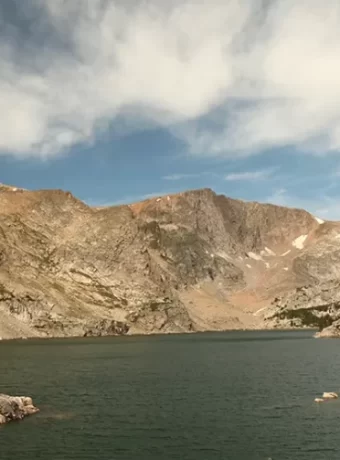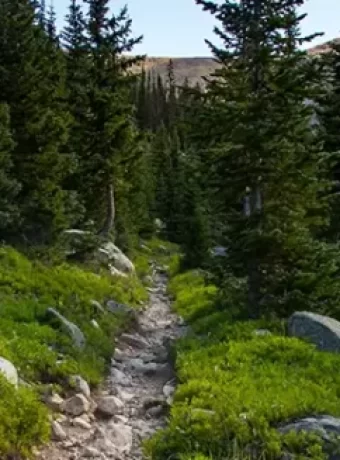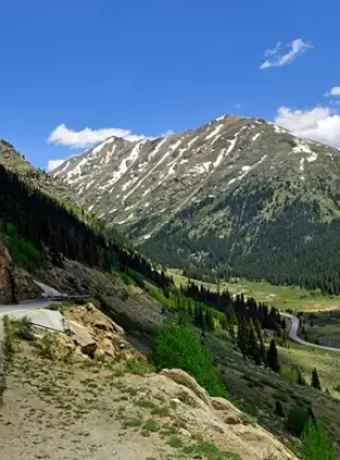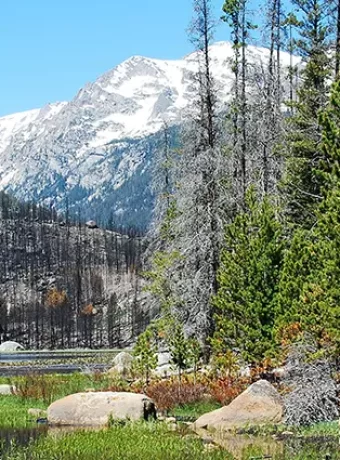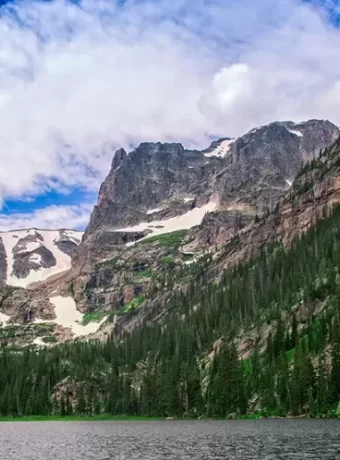History Bob Marshall Wilderness Complex
Ever heard of the History of Bob Marshall Wilderness Complex? Of this remarkable area doesn’t just boast foliage and pathways – it’s a demonstration of dedication to safeguarding nature’s wonders.
The complex tells a fascinating story that intertwines with the life of its namesake, Bob Marshall. An avid outdoorsman and fierce advocate for wilderness preservation, his legacy lives on within this untouched landscape.
We’ll journey through towering peaks, across sweeping valleys and alongside roaring rivers that make up this treasured sanctuary. We will also delve into intriguing tales about man’s relationship with these wild spaces. So sit back as we venture into an adventure steeped in nature’s grandeur and human tenacity.
I have been blessed to explore, hunt, fly fishing and just plain get lost in the beauty of it all. I have had a raft packed in and floated from Danner Creek out on the South Fork of the Flathead. Been in a patch of young 6 foot willows surrounded by bull elk in velvet in May. Watched a grizzly move through the willows while fly fishing a lake. I could go on and I will in other posts. The Bob has left a special mark on the soul of life.
Spent a couple of days disoriented up the Sun River and lost a few pounds.
The Bob Marshall Wilderness Complex and Its Importance
Located in the heart of Montana, The Bob Marshall Wilderness Complex, also known as ‘The Bob,’ is a jewel among America’s wilderness areas. Named after the preservation pioneer, Robert “Bob” Marshall, it embodies his vision for untouched nature.
This expansive complex spans over 1.5 million acres and holds the title as one of the largest completely preserved ecosystems in the lower 48 states. The scale alone underlines its significance not only to environmentalists but also to those who cherish outdoor recreation.
The Composition of the Complex
‘The Bob’ is a designated wilderness area that unites three distinct yet interconnected wild regions: The Great Bear Wilderness, Scapegoat Wilderness, and lastly named after its protector – The Bob Marshall Wilderness Area itself.
The raw beauty each area offers differs subtly from one another; they collectively contribute to forming an ecological powerhouse within this vast complex that provides refuge for countless flora and fauna species native to North America.
In particular, its rich biodiversity becomes more pronounced when we delve into specific locales like Chinese Wall—a remarkable escarpment stretching over twenty miles long with heights reaching up to 1000 feet—within ‘the heart’ of this sprawling landscape.
This unique combination has resulted in making it home for diverse wildlife while serving humans seeking solace away from their bustling life—an essential part contributing towards preserving our natural heritage through balance between conservation & recreation.
Beyond Recreation – A Lifeline For Ecosystems
Apart from being a paradise for hikers or backpackers looking forward to immersing themselves into the wild, this wilderness complex plays a critical role in maintaining regional ecological balance.
The ‘Bob Marshall Wilderness Complex’ is an important water source that feeds several major rivers. This has downstream effects on agriculture, fisheries and provides drinking water to communities. The complexity of ecosystems here also helps regulate climate conditions while providing habitat for endangered species.
In essence, it’s not just about preserving nature but sustaining life across multiple fronts.
A Testament To Bob Marshall’s Vision
just a physical space. An emblem of pristine loveliness, brimming with possibility and obscurity that’s just yearning to be revealed.
Montana’s ‘The Bob Marshall Wilderness Complex’ is a sprawling, preserved ecological gem named after preservation pioneer Robert “Bob” Marshall. Comprising three unique wilderness areas – The Great Bear Wilderness, Scapegoat Wilderness, and the Bob Marshall Wilderness Area – it offers refuge to countless native species and serves as an oasis for outdoor enthusiasts. Beyond just being a spot for recreation, this complex plays a crucial role in maintaining biodiversity and providing us with insights into nature’s untouched beauty.
The Legacy of Bob Marshall
Bob Marshall, also referred to as Robert Marshall, was not just a name but an iconic figure who made lasting contributions. He was a preservation pioneer and an impassioned advocate for the wilderness who left behind a profound legacy.
A New Yorker by birth but an outdoorsman at heart, he developed his love for nature during childhood trips to the Adirondacks. His commitment to protecting the wilderness only strengthened over time, eventually resulting in his recognition as one of America’s most influential conservationists.
Creation of the Wilderness Society
In 1935, fueled by his dedication to preserving wild lands from human interference or ‘civilizing,’ Bob teamed up with like-minded environmental advocates. Together they founded The Wilderness Society, an organization that would play a significant role in shaping U.S wilderness policy.
The society worked tirelessly towards their mission: ensuring public lands remained wild and free from exploitation. As co-founder and its first president until his untimely death in 1939, Bob played a crucial part in establishing The Wilderness Society’s ethos.
This pioneering work wasn’t just about setting up organizations; it was also about influencing attitudes towards our natural world. In fact, he coined the term “wilderness” itself.
Designation and Management of the Wilderness Complex
The Bob Marshall Wilderness Complex came into existence thanks to a decision by Congress. They designated this pristine area as wilderness in 1964, putting it under federal protection.
The Role of Various National Forests in Managing the Complex
Four national forests play vital roles in administering this vast complex: Flathead National Forest, Lewis and Clark National Forest, Lolo National Forest, and Helena National Forest. Each forest service has specific responsibilities that help preserve the unique character of ‘The Bob’.
Flathead National Forest, located on the western side of the Continental Divide, manages part of Great Bear Wilderness. It’s also home to stunning landscapes including Hungry Horse Reservoir and Swan Lake.
In contrast is Lewis and Clark National Forest. It’s spread over central Montana with its breathtaking mountainous terrain. This forest oversees parts extending towards east from Rocky Mountain Front Range up till Judith Basin County along Highway 87 corridor.
Lolo & Helena forests too have their own distinct areas within ‘The Bob’. The first being Lolo managing some rugged terrains whereas Helena administers regions closer to state capital city with same name.
A Collective Approach Towards Conservation
All these national forests work together for preserving ‘The Bob’. Their collective effort ensures that wildlife habitats remain intact while still providing opportunities for recreation like hiking or horseback riding. For instance – bear management involves coordinating efforts across all four jurisdictions because grizzlies don’t recognize human-drawn boundaries. Therefore they ensure that laws are enforced consistently throughout the whole region so no single area bears the brunt of human activity.
Also, these forests provide a platform for ongoing scientific research. The complex is seen as an invaluable natural laboratory, helping us understand more about ecosystems and our impact on them.
The Complexities of Wilderness Management
Managing such a large area of untouched nature presents its own difficulties. Ensuring that this region remains ‘wild’ requires balancing various interests including recreation, wildlife conservation, forest health, and fire management.
Wrapping things up, handling ‘The Bob’ isn’t merely about letting the wilderness thrive. It’s equally important to…
These four forests work together to protect the diverse wildlife habitats, and at the same time, they offer recreational activities for all to enjoy. From managing bear populations to maintaining forest health, their united efforts ensure ‘The Bob’ remains a pristine wilderness.
Unique Geographic Features of the Wilderness Complex
From impressive river drainages to colossal rock formations like the Chinese Wall, ‘The Bob’ is teeming with natural wonders.
The Rivers and Drainages in the Complex
Rivers carve through this wilderness complex like veins on a leaf. The Continental Divide runs for 60 miles within its bounds (Wilderness Act), acting as nature’s boundary between east and west. This monumental landform shapes several major river systems such as Sun River, Middle Fork Flathead River, and South Fork Flathead River. Sun River primitive area has its own story to tell; cutting across ancient bedrock and cascading down rugged mountainsides before meandering into calmer plains below. Similarly intriguing are Middle Fork’s steep canyons nestled amidst lush forests while South Fork carves out flat valleys dotted by picturesque alpine lakes. What really sets these rivers apart isn’t just their scenic beauty but also how they have sculpted ‘The Bob’. Over time, their persistent flow has shaped everything from broad valley floors to sharp mountain ridges – each adding unique elements to this breathtaking wilderness landscape. (Wilderness Act).Awe-Inspiring Geological Formations
Beyond rivers and drainages lies another striking feature: ‘The Chinese Wall.’ Stretching over 22 miles long at an average height of 1,000 feet above surrounding landscapes – this limestone escarpment is truly awe-inspiring. The Chinese Wall is an impressive limestone escarpment, towering at 1,000 feet above the surrounding landscape and extending for 22 miles along the Continental Divide – a sight that will make you feel small in comparison.
Not only does the wall offer a visual spectacle, but it also plays a vital role in ‘The Bob’s’ ecology and climate. Acting as a barrier for Pacific winds carrying moisture, it results in varying rainfall on both sides. This stark contrast shapes unique habitats – lush forests to the west and semi-arid landscapes to the east.
Marvel at the geological grandeur of ‘The Bob’. Its impressive river systems like Sun River and Middle Fork Flathead River have carved unique landscapes over time, from sharp mountain ridges to vast valleys. Be awed by its towering spectacle – ‘The Chinese Wall’, a limestone formation that influences not just visual splendor but also local ecology and climate.
Wildlife in the Bob Marshall Wilderness Complex
The wilderness area serves as home to numerous species, each playing its part in maintaining this unique ecosystem.
The Threatened Grizzly Bear Population
Arguably the most notable residents are grizzly bears. Their presence not only speaks volumes about the untouched nature of this region but also brings attention to their vulnerable status.
In ‘The Bob’, these magnificent creatures find ample winter range and food sources necessary for survival. Despite challenges such as habitat loss elsewhere, here they roam freely across vast stretches of pristine land – making it a critical haven for them.
Apart from grizzlies, another standout feature of this wilderness complex’s wildlife scene includes mountain goats and bighorn sheep defying gravity on steep slopes. Spotting these agile climbers effortlessly traversing rocky outcrops becomes one highlight you won’t forget anytime soon.
Beyond that, elk herds add yet more allure to ‘The Bob’. In fact, watching an elk bugling contest during rut season is something that remains etched in your memory forever due to its sheer rawness and authenticity.
If birdwatching tickles your fancy then you’re going to love spotting various raptors soaring high above or observing waterfowl dabbling around countless lakes and ponds scattered throughout this expansive landscape.
Fish Species Galore
No discussion about wildlife within the complex would be complete without mentioning fish species thriving in its rivers like Sun River drainage east side or Flathead River. Here, anglers get the chance to pit their skills against feisty native cutthroat trout or massive bull trout.
The presence of these fish species is indicative of the healthy aquatic ecosystems in place, a testament to ongoing conservation efforts that ensure minimal human impact on this treasured wilderness area.
Other Remarkable Species
Besides hosting large mammals and fish, ‘The Bob’ is also a home to an amazing variety of smaller creatures. This includes tiny alpine insects that buzz around wildflowers during the brief summer months, and elusive lynxes whose presence can only be detected through their paw prints in the snow.
amphibians, the Bob Marshall Wilderness Complex is teeming with life. Its vibrant biodiversity is a testament to its pristine environment and diligent preservation work. This rich variety of species truly makes ‘The Bob’ an exceptional wilderness treasure.
Recreational Opportunities in The Bob Marshall Wilderness Complex
For those seeking solace in the great outdoors, The Bob Marshall Wilderness Complex offers a wealth of recreational opportunities.
Horseback Riding and Wildlife Viewing Opportunities
If there’s one thing that stands out about The Bob, it’s the vast expanse of unspoiled nature waiting to be explored on horseback. There are numerous trails suitable for equestrian use throughout the complex. As you trot along these trails, keep your eyes peeled for diverse wildlife.
This designated wilderness area is home to animals such as elk herds which often graze peacefully near hiking routes and camping sites. You might also spot bighorn sheep scaling rocky slopes with impressive agility.
In addition to hoofed residents like these mountain goats or elks who make their winter range here, sightings of smaller creatures including squirrels and songbirds are quite common too. These encounters can transform any simple ride into a memorable adventure.
For those seeking more thrill from their visit than just horseback riding can provide; hunting offers another avenue worth exploring at certain times of year under specific regulations.
Fishing Excursions on Flathead River
The pristine waters flowing through this region offer anglers ample opportunities too. From alpine lakes nestled high up in mountains down to swift-flowing rivers like the Sun River or Middle Fork – each location holds its own unique charm and challenges when casting line against current.
The South Fork of the Flathead River is a go-to spot for fly fishers looking to challenge themselves. The waters teem with native species such as cutthroat trout and bull trout. If you’re patient and skilled enough, you might even hook a monster pike.
Hiking in Bob Marshall Wilderness
But let’s not forget about hiking – it’s arguably one of the most rewarding ways to immerse yourself in this wilderness area. There are hundreds of miles of trails crisscrossing ‘The Bob’, leading hikers through scenic vistas that’ll leave you breathless.
Sorry, but there’s no content provided in your request. Could you please provide the paragraph that needs to be rewritten? I’ll be happy to help with improving its flow and readability once I have it.
Unleash your inner adventurer at ‘The Bob’. Saddle up and explore stunning trails on horseback, casting an eye out for diverse wildlife from elk to songbirds. Get the thrill of fishing in pristine waters or hiking through breathtaking vistas. There’s never a dull moment in this outdoor paradise.
Comparison with Other Wilderness Areas
‘The Bob’, as the locals lovingly call it, holds its own against other wilderness areas. Notably, Glacier National Park, another iconic wilderness in Montana.
The Rocky Mountain Ecosystem
When you step into ‘The Bob’ or Glacier National Park, you’re stepping into a segment of the vast Rocky Mountain ecosystem. These two share many common features – from dense forests to alpine meadows and craggy peaks. But each also has its own distinctive qualities.
In both regions, the North Fork of the Flathead River forms an important part of their ecosystems. It’s one of those places where pristine water and untouched wilderness create a scene straight out of a postcard.
Scapegoat Wilderness, like ‘The Bob’, is located within Lolo National Forest boundaries which can be found here. The area offers similarly rugged terrains but lacks some species present in ‘The Bob’ due to differing climates and altitudes.
In contrast to these lands though lies Great Bear Wilderness just southward—home to grizzlies roaming freely under towering cedars—a stark reminder we’re merely guests here.
Variety Within Borders: Unique Features Abound
The landscapes between ‘the Bob’ and Glacier vary significantly too. In ‘the Bob’, for instance, Chinese Wall’s dramatic limestone escarpment towers over hikers – while such formations are not seen at all in Glacier National Park.
But don’t discount Glacier yet. Its eponymous glaciers offer unparalleled icy vistas that cannot be experienced elsewhere—not even amidst the stunning panoramas of ‘The Bob’.
And let’s not forget Helena National Forest, another gem in Montana. Though it lacks ‘The Bob’s’ grandeur with fewer high peaks and sprawling wilderness, its pine-covered hills offer a quiet respite from modern life nonetheless.
A Tale of Two Wildernesses: Conservation Matters
People have different ways of tackling conservation. Some take a hands-on approach, others prefer to educate and advocate for change.
to sweeping meadows, each area has its own beauty. This variety in landscapes brings with it a diversity of wildlife and plant life that thrive in these different conditions. So whether you’re an avid hiker or just someone who appreciates the natural world, ‘The Bob’ offers something for everyone to enjoy.
Conservation Efforts in The Bob Marshall Wilderness Complex
The preservation of the Bob Marshall Wilderness Complex is a significant undertaking, requiring joint efforts from various entities. Let’s delve into how these bodies are working tirelessly to keep ‘The Bob’ pristine and rich in biodiversity.
The Role of National Forests and Law Enforcement Agencies
The management of this massive wilderness complex falls under multiple national forests like Flathead National Forest, Lewis & Clark National Forest, Helena-Lewis & Clark National forest among others. These agencies work hand-in-hand with law enforcement officers to make sure rules for preserving the area’s natural state are upheld by visitors.
From implementing restrictions on motorized equipment usage within designated wilderness areas to patrolling against illegal hunting activities, they strive to maintain balance between human recreation and wildlife conservation. In fact, they also spearheaded initiatives such as river game preserve establishment around Sun River drainage east and Blackfoot River.
Promoting Eco-friendly Recreational Activities
Apart from strict regulations enforcement, there’s also emphasis on promoting eco-friendly recreational activities such as hiking or horseback riding that leave minimal impact on the environment while allowing visitors to experience its raw beauty first-hand.
This delicate balancing act between visitor access and environmental protection isn’t easy but it ensures sustainable tourism practices which play an integral role in keeping ‘The Bob’ unspoiled for future generations.
Involvement of Non-Profit Organizations
Certain non-profit organizations too have been instrumental in ensuring ‘The Bob’ remains undisturbed – particularly notable being The Wilderness Society co-founded by none other than Bob Marshall himself. They’re actively involved in spreading awareness about wilderness preservation and encouraging public participation in conservation efforts.
Such entities, alongside concerned citizens, continue to fight against potential threats like mining or logging proposals that could degrade this vast untouched land. This collective action demonstrates the powerful impact of people when united for a common cause – preserving our natural heritage.
The Legacy of Bob Marshall
Yes, it’s important to highlight that many of these conservation efforts are thanks to the work of The Wilderness Society.
Preserving ‘The Bob’ is a massive task, with various national forests and law enforcement agencies working together to maintain its natural state. They implement rules, patrol against illegal activities, and promote eco-friendly recreation. Non-profit organizations like The Wilderness Society also play crucial roles in raising awareness and fighting threats to the wilderness. All these efforts make sure that this richly biodiverse area stays as pristine as possible for future generations to appreciate.
FAQs in Relation to History of Bob Marshall Wilderness Complex
Why is it called the Bob Marshall Wilderness?
The wilderness complex was named after Robert ‘Bob’ Marshall, a forester and preservation pioneer who pushed for its protection.
Are there grizzly bears in the Bob Marshall Wilderness?
Absolutely. The Bob hosts one of Montana’s most robust grizzly bear populations along with diverse wildlife like elk and mountain goats.
What is the largest wilderness complex in the United States?
The Wrangell–St. Elias National Park and Preserve in Alaska holds that title, being over 13 million acres large.
What is the Continental Divide in the Bob Marshall Wilderness?
In this area, it’s an epic ridgeline known as Chinese Wall—a stunning limestone cliff stretching about 60 miles long.
Conclusion of Bob Marshall Wilderness Complex
What a journey through the History of Bob Marshall Wilderness Complex, right?
This expansive wild area isn’t just about the environment; it’s a reminder of America’s dedication to preserving nature.
You’ve discovered how this pristine landscape was shaped by its namesake, Bob Marshall. A tireless advocate for wilderness preservation and co-founder of The Wilderness Society, his legacy lives on within these untouched spaces.
You’ve explored the diverse geography that makes up ‘The Bob’, from towering peaks and sweeping valleys to roaring rivers. The majestic wildlife of ‘The Bob’ such as grizzly bears, mountain goats, bighorn sheep and elk herds make it an extraordinary place to explore.
We hope you’re inspired by the many recreational opportunities in this vast complex like hiking, camping or horseback riding while observing stunning wildlife in their natural habitat.
And remember – we all have a part in preserving such areas so future generations can appreciate them too!
Hikes and More Wilderness
Hike the Continental Divide Trail, backpack from north to south or north to south the choice is yours.

